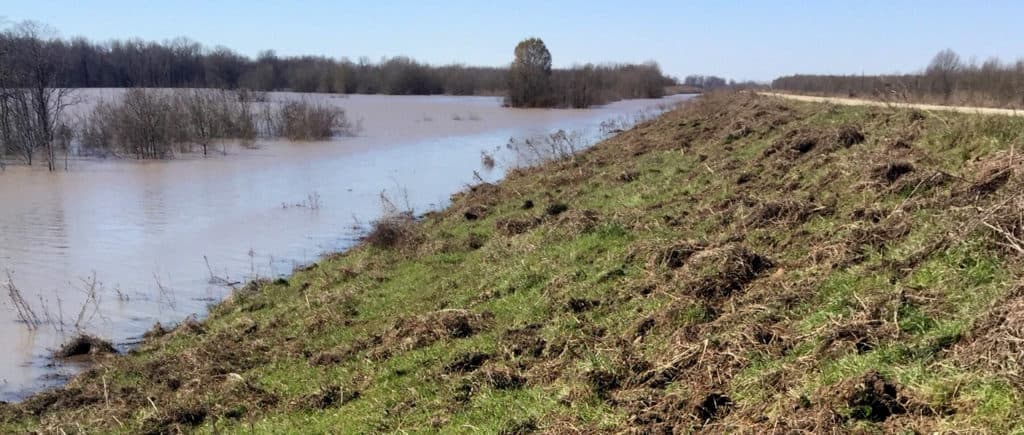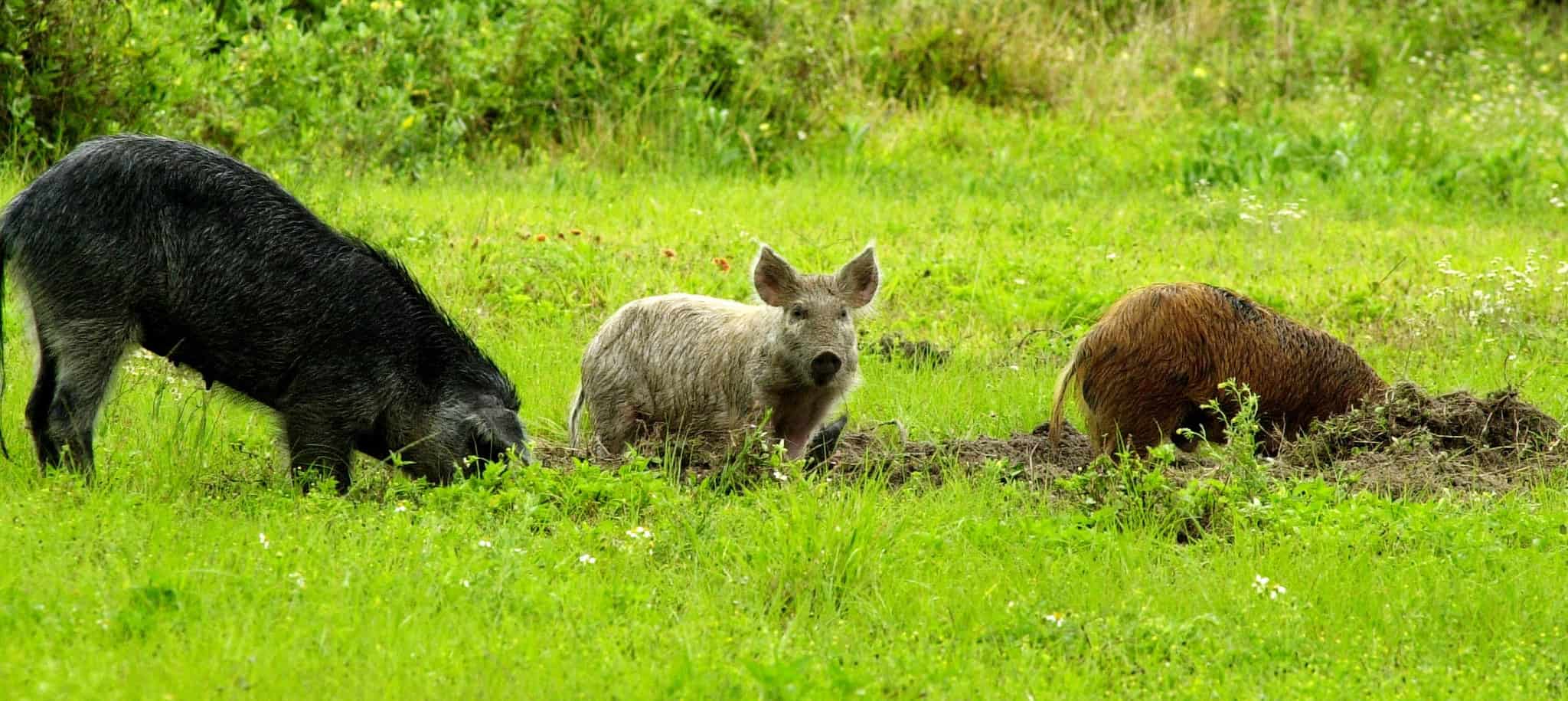Share this article
Aerial control efforts underway as swine damage levees
The impact of the winter’s weather on feral swine control has varied, but it also provides a reminder of another benefit to that effort.
Mississippi and Louisiana are anticipating an early and high flood stage on the Mississippi River, a result of heavy rains and melting snow further north, as well as higher than normal rains in the south. Feral swine control protects agricultural and natural resources in the south, but it can also provide an additional advantage: protecting levees.
The rooting behavior of the pigs (Sus scrofa) can significantly damage vital levees. A broken levee could flood thousands of acres along with all the homes and business in the way, so swine removal protects properties as well.

The side of a levee shows rooting damage caused by feral swine. As flood levels rise, damage like this can have serious repercussions. ©USDA Wildlife Services-MS
In western Tennessee, this year’s rainy conditions and high waters have made aerial operations very successful, as sounders have clustered in ever smaller plots of high ground. There, removal efforts have been productive, as they have been in Mississippi throughout February.
On the other hand, a weeklong operation in southeast Arkansas was grounded for days due to unsafe flying conditions. The Wildlife Services aerial program is used over public and private lands in conjunction with Arkansas Game and Fish’s large-scale trapping efforts. In a few periods of clearer weather, more than 100 swine were removed.
The Wildlife Services-Tennessee program manages the eastern region resources for Wildlife Services aerial operations. Aerial removal of feral swine accounts for more than 40 percent of the hogs taken by Wildlife Services programs nationally during the past five years. Most aerial work is conducted by a biologist crewmember, who has extensive training at the Aviation Training and Operations Centers in Utah.
Header Image: Feral swine’s rooting behavior can be damaging to agricultural land, but it can also cause significant damage to levees. ©USDA Wildlife Services








